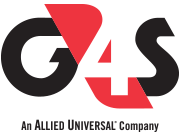Contactless does not mean cashless in businesses after lockdown

The owners of a small town bakery in England’s southeast have a unique option for customers who wish to pay with cash. On one side of the checkout, there is an “in” tray, where people can put their banknotes and coins. Behind the counter, employees dispense change from a second tray. Notes and coins are wiped before moving from the “in” to the “out” tray.
It is not a perfect solution, but it highlights two important issues. Firstly, the inaccurate belief that cash somehow poses more of a health risk than any other surface. And secondly, that many customers rely on cash as a payment option. There are better, more efficient, and - importantly - more scalable solutions out there.
This past weekend, pubs, restaurants, hotels, theatres, galleries and hairdressers - among other businesses - reopened to the public. For many, there has been an emphasis on going “contactless”. I have read columns by commentators who recommend this approach. While this is a well-meaning move, it risks unnecessarily alienating millions of people who either want, or need, to pay with cash. Contactless should not mean cashless.
Let’s just have a look at the numbers.
Cash payments account for about a quarter all transactions, according to UK Finance - a lot of potential revenue for a business to miss out on in a post-lockdown, COVID-19 world.
Eight million adults in the UK - 17 per cent - either do not have bank accounts or would struggle if cash were to disappear, according to the Access to Cash report. Likewise, G4S's World Cash Report found that cash is still the most widely used form of payment around the world.There are over 70 billion pounds worth of notes in circulation in the UK - roughly twice as much as there was a decade ago, the Bank of England says.
In the past weeks we have seen ATM outflows steadily increasing. Cash is coming into the network, and customers will want to be able to choose to pay with it. Likewise, cash is often used by many to budget effectively, and it offers a level of anonymity not possible with card payments. The cash-in-transit industry has reported that collection volumes are increasing, as retailers and customers begin their journeys to the post-lockdown world.
Last month, Consumer group Which? released the results of a survey that highlighted how important cash is to those most vulnerable in society.
They spoke to more than 2,000 people, and found nearly one in five were managing finances or ordering food and essentials for someone outside of their immediate household. Of those, a third had bought food from a shop for others and been paid for it in cash, and 29 per cent had ordered for someone online and been paid for it with cash - while many responded that they had done both.
In short: millions of people in the UK rely on cash for their groceries and other shopping. For some this is down to choice - it is their preferred payment option - but for many it is the only payment option they can use. In either case, businesses must ensure that these customers are catered for.
G4S’s own “Contactless Cash” system is one great example. This technology lets customers deposit cash payments directly into a smart safe at the checkout that can, like a vending machine, return the correct change. It also allows the retailer to have the cash added to their bank account automatically. This protects staff and makes the cash “contactless”.
There is a misconception that persists that the World Health Organisation has declared cash unsafe. This is simply not true. While a few big media outlets reported that conclusion, the WHO immediately clarified their comments, saying consumers should wash their hands after handling cash. This is the same advice they give for using card and payment devices.
Using cash is not any more dangerous than touching anything else, like, for instance, the items customers are buying. Offering customer payment choice will be important to retailers growing their business after lockdown. Not accepting cash will likely lose valuable customer footfall.
The European association of cash companies, ESTA, has called on central banks to keep cash supplies flowing. “We are faced with the difficult situation that the acceptance of cash has been undermined through unfounded claims that cash might spread COVID-19, or conversely that cards might protect against it,” the organisation said in a statement in May.
“Banknotes and coins are safe to use in the era of the Coronavirus,” ESTA and several other groups said in a joint statement. “Stigmatising their use erodes personal freedom and choice, hurts marginalised groups, and only benefits private payment providers at the expense of the consumer.”
Cash, like any form of payments - including cards and mobile devices - must be used sensibly. The best advice is to always wash hands regularly and thoroughly in all circumstances.
Contactless card payments are increasing, but they should be one part of a business’s payments strategy. Contactless should not mean cashless. Customers will ultimately decide where they shop and how they choose to pay for their shopping will form part of their decision.
